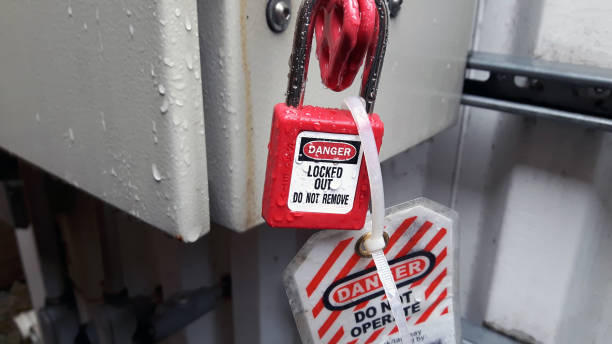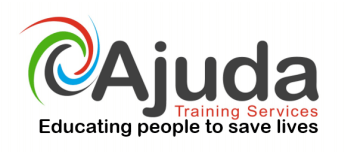According to the Royal Society for the Prevention of Accidents (RoSPA), more than 6,000 people will end up in hospital on Christmas Day and over the Christmas period more than 80,000 people visit A&E and these numbers appear to be rising. Not only is there an increase in admissions due to common winter illnesses, hospitals in the UK see thousands of people treated for Christmas-related injuries. Christmas sees injuries from knives, trips (e.g. from fairy light wires), food poisoning and burns. With serious incidents such as house fires also being more common than during other times in the year; People are 50% more likely to die in a house fire over Christmas than at any other time of year. Approximately 350 people a year are hurt by Christmas tree lights, according to RoSPA. Injuries include people falling while they’re putting them up, children swallowing the bulbs, and people getting electric shocks and burns from faulty lights. RoSPA’s advice is to ‘Test your lights and the wiring before you put them up, as they can deteriorate over the years. If you have old lights, buy new ones that meet higher safety standards, don’t overload sockets, as that’s a fire risk.’ – Since 1996, 31 people have died from watering their Christmas tree with the lights plugged in – 1 in 10 people burn themselves while setting fire to Christmas pudding – 350 people a year are hurt by Christmas tree lights – 1,000 people a year are hurt when decorating their homes – People are 50% more likely to be in a house fire at Christmas than at any other time of the year – Do not leave candles unattended (this advice should be followed throughout the year) – Ensure Christmas cards and wrapping paper are kept clear of open flames (e.g. do not hang cards above the fireplace and do not light candles near cards) – To reduce the risk of trips, slips and falls, keep holiday clutter to a minimum (e.g. invest in a cable tidy to keep stray wires minimal) – Watch out for small items that could cause a choking hazard, particularly in young children (e.g. Christmas cracker prizes) – Open packaging with scissors not knives to avoid careless injuries – If you have old Christmas lights, consider investing in new ones which will meet much higher safety standards – Keep the lights switched off until the Christmas tree is decorated and don’t let children play with the lights (some have swallowed the small bulbs) – Don’t overload sockets – Don’t let bulbs touch anything that can burn easily such as paper (this includes decorations) – Keep glass baubles out of reach of toddlers and pets – Don’t be tempted to leave the lights on when going to bed or when leaving the house – Follow the instructions on the turkey and don’t risk short cuts as it takes hours to cook a turkey thoroughly (uncooked turkey can cause salmonella poisoning, which can be life-threatening for vulnerable people) – Do NOT drink and drive! Take this advice on board to ensure that your Christmas is memorable for the right reasons. Have a lovely, safe Christmas and a very Happy New Year. If you have any other suggestions on ways to stay safe over Christmas, please Tweet us on @ajuda_training. To book yourself onto any of our valuable, life-changing courses (such as, First Aid, Health and Safety or Food Hygiene) in the New Year, please see our Course Calendar and use our new online booking system to book your place. To view our Christmas opening hours, please click on the picture below.

To put these risks into perspective, here are just a few Christmas accident statistics:
– 30 people die from food poisoning each ChristmasHere are some handy hints to keep your house safe:
Author: Dawn Evans
Merry Christmas and a Happy New Year

We are closing at 16.30pm on the 23rd December 2024 and re-opening on the 6th January 2025.
We would like to take this opportunity to thank you all for your custom over the past year, and wish all of our clients, old and new, a very Merry Christmas and a happy and healthy New Year.
2024 has been a special year for us at Ajuda and we are looking forward to what is to come in the new year.
Our open courses will be running throughout 2025 at our training academy in Cardiff Bay. Please click here to view the full list of our 2025 open courses.
Enjoy your break and we'll see you in 2025!
Modern Slavery

Course Overview
This on E-Learning Modern Slavery course covers the main aspects and concerns over modern slavery, particularly in the UK.
Modern slavery is the recruitment, movement, harbouring or receiving of adults and children.
In the UK, it’s estimated there are more than 130,000 modern slavery victims, and throughout this online Modern Slavery course, we’ll be presenting example case studies.
Modern slavery is wide ranging and includes forced labour, debt bondage and sexual exploitation, along with forced marriage and criminal exploitation.
During this E-Learning Modern Slavery course you’ll discover who’s vulnerable to human trafficking and how they are trafficked, recruited and controlled.
We’ll discuss, during this online Modern Slavery course, the victim’s perspective and show the hidden personal signs of modern slavery and how to identify locations that could act as a base.
You’ll also learn how to report modern slavery, and the role of the National Referral Mechanism during this Modern Slavery online course.
During this Modern Slavery E-Learning course, we’ll suggest ways the government could stop modern slavery and examine the workings of the Modern Slavery Act 2015
Within this modern Slavery online course, we’ll look at the role of small businesses in combatting modern slavery, and provide practical tips, including how to make an anti-slavery pledge.
Finally, we offer useful contact details – including the authorities and charities that provide specialist support for victims of modern slavery at the end of this E-Learning Modern Slavery course.
Modern Slavery Target Audience
This online E-Learning Modern Slavery course is aimed at all employees as it is relevant to most businesses across all industries.
Understanding the most common form of modern Slavery, who is most vulnerable and how to report Modern Slavery is vital in many businesses.
Online training is flexible, efficient and cost effective meaning the candidate can progress through the modules at their own pace and in their own time, so they can fit the training around their work and personal life.
Duration of the course
4 Modules
Approximately 40 minutes
Cost – £35
Hot Works

Hot Works Course Overview
Our full suite of interactive video based online courses can be white labelled and distributed by you.
This short E-Learning Hot Works online course provides you with an introduction to hot work, the hazards associated with it and controls that can be put in place to minimise these hazards.
What is meant by hot work? Often seen in the construction and maintenance industries, hot work is the name used to describe any activity involving open flames or other heat sources, sparks, or flame-producing equipment.
Now, as such works can be extremely hazardous if not executed correctly, it is of paramount importance that all workers undertaking hot works understand the hazards involved and the safety precautions they must take in their day-to-day work.
After detailing what is meant by hot work, this online Hot Works E-Learning course sets out the hazards associated with such works, explores the controls that can be put in place to keep your workplace safer and finishes by explaining why you should use a permit to work scheme for hot work activities.
Written in our straightforward, easy to understand style, this E-Learning Hot Works online course provides you with all the information they need to help keep everyone safe in the workplace.
Target Audience
This E-learning Hot Works online course is aimed at those in any industry that will encounter Hot Works. This could include site supervisors or managers.
E-Learning Advantages
Online training is flexible, efficient and cost effective meaning the candidate can progress through the modules at their own pace and in their own time, so they can fit the training around their work and personal life.
Price
£35
LOLER Lifting Operations and Lifting Equipment Rehgulations

LOLER – Lifting operations and Lifting Equipment Regulations
This short E-Learning LOLER course provides you with an introduction to the Lifting Operations and Lifting Equipment Regulations 1998, otherwise known as LOLER.
The online E-Learning LOLER course starts by explaining the purpose of LOLER, before setting out what is meant by a lifting operation. The LOLER online course will then provide some examples of equipment covered by the legislation.
The E-Learning LOLER course will then explore why lifting equipment safety is so important, detailing the types of injuries that machinery can cause.
Moving on, the online LOLER E-Learning course covers the equipment maintenance requirements that must be complied with by law. The LOLER online course provides a detailed explanation as to what is meant by ‘thorough examination’ under LOLER, then looks at lifting equipment markings and the safe working load.
The E-Learning LOLER online course finishes by covering what the regulations require of your organisation when it comes to the protection of young persons.
Target Audience
This E-learning LOLER online course is aimed at those in any industry that are responsible for and the use of Lifting Equipment. This could include site supervisors or managers.
eLearning Advantages
Understanding the risks and how to protect yourself from Lifting Operations and Lifting Equipment.
Online training is flexible, efficient and cost effective meaning the candidate can progress through the modules at their own pace and in their own time, so they can fit the training around their work and personal life.
Modules
4
Course Duration
28 minutes
Price
£35
TikTok for Business

TikTok for Business Course Information
This online E-Learning TikTok for Business course will give you an overview on the history of TikTok, its user demographics and the three business benefits offered by the platform.
TikTok is one of the world’s fastest growing social networks and is available in over 150 markets with over 1 Billion users each month.
The format involves posting short-form videos – mostly for entertainment. However, it also presents significant opportunities for businesses.
This online TikTok for Business course starts with the history of TikTok, its user demographics and the three business benefits offered by the platform.
On a practical level, this E-Learning TikTok for Business online course will show you how easy it is to create your TikTok Business account and optimise your profile.
Within this online TikTok for Business course, there’s information on how to create engaging content for your existing and potential customers, how to get to know your target audience, develop your content strategy and partner with influencers.
TikTok ads spread awareness of your company or promote the sale of your products or services.
This online TikTok for Business course will discuss the importance of TikTok advertising campaign strategies, whether it’s a one-off offer, an advertisement group or a collection of advertisement groups.
Finally, the TikTok for Business E-Learning course will show you how to use TikTok’s analytics tools to monitor the success of your advertising and use your insights to generate increasingly effective campaigns in the future.
TikTok for Business Target Audience
This online TikTok for Business E-Learning course is aimed at anyone who is involved in promoting and marketing their business online.
TikTok for Business E-Learning Advantages
Online training is flexible, efficient and cost effective meaning the candidate can progress through the modules at their own pace and in their own time, so they can fit the training around their work and personal life.
Duration of the course: 20 minutes
Price: £35.00
Asthma Attacks and how to tackle them
What to do during Asthma Attacks
Asthma is a condition that affects the airways of the lungs. Asthma can cause the lungs to go into spasm and tighten which can make it very difficult to breathe for someone who is having an Attack. There are many factors that can trigger Asthma Attacks; the weather, allergies, over exertion, illness and stress to name but a few.
3 people die every day in the UK from fatal Asthma Attacks; these could potentially be avoided if people understood more about the condition. Every 10 seconds someone has a potentially life-threatening asthma attack.
What are the symptoms of Asthma Attacks?
-Tight chest
-Difficulty breathing
-Wheezing
-Coughing
-Distress
-Struggling to speak, sleep or eat
-Children can sometimes complain of a tummy ache
Usually, these symptoms will not occur suddenly.
What do you do when Asthma Attacks occur?
-Stay calm, panicking will only make things worse.
-Make them comfortable
-Ask them to use their reliever inhaler
-Reassure them
-Encourage slow and steady breathing
-If the casualty shows no sign of improvement or the casualty does not have their inhaler with them, call 999 or 112
If you think you are having an asthma attack and you are alone, take the above steps. Take slow and steady breaths and try to remain calm. If your symptoms do not improve, do not hesitate to call 999 or 112.
Advice for friends and family
It is very important that friends and family of Asthma sufferers know how they can help during an emergency.
If you have a personal Asthma action plan, it is useful to make copies and share it with people that are you are often with so that they have something to refer back to during an emergency.
If you are interested in learning how to help in emergency medical situations, please get in touch with our team about booking yourself a space on one of our first aid training courses. Contact us on admin @ajuda.org.uk or call 029 2057 6883.
Hand & Arm Vibration Syndrome

Hand Arm Vibration Syndrome Overview:
This short course provides you with an introduction to Hand Arm Vibration Syndrome, otherwise known as HAVS.
The course starts by establishing exactly what Hand Arm Vibration Syndrome is, before providing a detailed description of the symptoms and consequences of the disorder.
It then provides an overview of the equipment and work-related situations most likely to pose a risk of HAVS, and the exposure values that must be complied with by law.
Following this, the course covers the practical steps you can take to reduce the risk of HAVS, and looks at the law with regards to HAVS, including the responsibilities that both employees and employers must comply with in order to reduce the risk.
Hand Arm Vibration Syndrome Target Audience:
This Managing Occupational Health online course is aimed at supervisors and managers who are responsible for the health and wellbeing of their employees.
Hand Arm Vibration Syndrome E-Learning Advantages
Understanding the risks and how to protect yourself from vibrating power tools.
Online training is flexible, efficient and cost-effective, so candidates can progress through the modules at their own pace, in their own time, making it easy to fit the training around their work and personal life.
Number of modules: 6
Course Duration: 40 Minutes
(Note: This is based on the video content shown and is rounded off. It does not account in any way for loading time or thinking time on the questions)
Course Price: £35
Provision and Use of Work Equipment Regulations (PUWER)

PUWER Course Overview:
This online E-Learning PUWER short course provides you with an introduction to the Provision and Use of Work Equipment Regulations, otherwise known as PUWER. During this online PUWER course you will learn about the types of equipment that fall under this legislation along with the common hazards, equipment inspections and maintenance.
This short PUWER online course provides you with an introduction to the Provision and Use of Work Equipment Regulations, otherwise known as PUWER.
The E-Learning PUWER course starts by explaining the purpose of PUWER, and then turns to look at the types of equipment that fall under this legislation. This is followed by an explanation as to the responsibilities both employers and employees have under the regulations.
Next, this online PUWER course explores the common hazards associated with the use of work equipment; before moving on to look at different methods of guarding available to keep you safe from injury.
Finally, the PUWER E-Learning course explores the requirements with respect to equipment inspection and maintenance under the regulations.
PUWER Target Audience
This online PUWER E-Learning course is aimed at anyone in the workplace that uses machinery. This could include site supervisors or managers.
PUWER E-Learning Advantages
This E-Learning PUWER course will help with the understanding how work equipment is maintained safe for use, in a safe condition and suitable for the intended use.
Online training is flexible, efficient and cost effective meaning the candidate can progress through the modules at their own pace and in their own time, so they can fit the training around their work and personal life
Number of modules: 6
Course Duration: 35 Minutes
(Note: This is based on the video content shown and is rounded off. It does not account in any way for loading time or thinking time on the questions)
Course Price: £35
Ladder Safety

Ladder Safety Course Overview:
This online E-Learning course provides a detailed exploration into ladder safety.
During this online Ladder Safety course you will learn about the different types of ladders, how to check and secure a ladder, and what a competent person looks at during a ladder inspection along with the laws that govern ladder safety,
The Ladder Safety E-Learning course begins with a look at the laws that govern ladder safety, before moving on to explain how to check a ladder, and what a competent person looks at during a ladder inspection.
The online Ladder Safety course continues with a study of the different types of ladders you may come across in your role, and how they must be used.
Next, the E-Learning Ladder Safety course covers when and where a ladder can be used, and how it needs to be secured for use, before finishing with a look at some common ladder mistakes.
Ladder Safety Target Audience
This E-Learning Ladder Safety course is aimed at all industries and individuals that use ladders. This could include site supervisors or managers.
Ladder Safety E-Learning Advantages
Understanding the risks and how to protect yourself when using ladders will ensure you handle and work with them safely.
Online training is flexible, efficient and cost effective meaning the candidate can progress through the modules at their own pace and in their own time, so they can fit the training around their work and personal life
Number of modules: 5
Course Duration: 30 Minutes
(Note: This is based on the video content shown and is rounded off. It does not account in any way for loading time or thinking time on the questions)
Course Price: £35
Lock Out / Tag Out (LOTO)

Lock Out / Tag Out Overview:
This online E-Learning course provides an overview of Lockout/tagout (LOTO) – the safety practices and procedures that ensure dangerous machines are properly shut off during service, repair or maintenance.
The LOTO online course begins by describing what a lock out / tag out system is, detailing its purpose, and what it involves.
This E-Learning course on LOTO then moves on to the types of hazard exposures that might require lock out / tag out, and follows this with a look at the laws associated with lock out / tag out, and the responsibilities that you, and your employer, have under these regulations.
Finally, the E-Learning course on LOTO sets out a six-step process you need to follow to ensure a safe lock out / tag out.
Lock Out / Tag Out Target Audience
This online E-Learning course on LOTO is aimed at anyone involved with the service, repair or maintenance of machinery or equipment that can unexpectedly release hazardous energy if it is not shut down and isolated correctly. This online course is also relevant to the employees working alongside these people and their supervisors and managers.
Lock Out / Tag Out E-Learning Advantages
Knowledge of the reasons for a Lockout / Tagout system and awareness of the dangers of not implementing correctly reduces the chances of LOTO accident occurring.
Online training is flexible, efficient and cost effective meaning the candidate can progress through the modules at their own pace and in their own time, so they can fit the training around their work and personal life.
Number of modules: 3
Course Duration: 25 Minutes
(Note: This is based on the video content shown and is rounded off. It does not account in any way for loading time or thinking time on the questions)
Course Price: £35
Bonfire Night First Aid

This weekend Bonfire Night will be celebrated around the UK. According to statistics from The Royal Society for the Prevention of Accidents around 1,000 people visit A&E for treatment of firework related and other bonfire night related injuries in the four weeks around the event.
Although Bonfire Night is certainly a time for fun, we’ve written this blog to provide first aid tips that are simple to learn and well help you to be prepared to treat any of these injuries if they occur.
Burns or scalds
– Run the burn under cold water for at least 10 minutes. Skin needs to be completely cool to prevent pain, scarring or any further damage.
– Remove any jewellery or clothing that is near the burn – do not remove if they are stuck to the burn.
– Don’t pop any blisters or apply creams – doing this risks making the injury worse.
– One the burn is cooled, cover with a plastic bag or clingfilm.
– If necessary, treat a casualty for shock by laying them down with their legs raised above the level of their heart e.g. on a chair.
– If the burn is on a child, or, if you think the burn is serious (e.g. deep, larger than the size of the casualty’s hand, on the hands, feet or face) call 999/112 for an ambulance. There will also be first aiders at almost all public firework displays in the UK so keep an eye out when you get to the event in case you need to go and get help.
Debris in the eye
– Do not rub the casualty’s eye or let them rub the eye as it will make it worse.
– Pour clean water over the eye to wash out what is in it or to cool the burn.
– If this does not work, try to lift the debris out with the damp corner of a clean tissue.
– If this also does not work, cover the eye with a clean dressing (if a dressing is not available make sure you use a non-fluffy material).
– Take the casualty to the nearest hospital.
Smoke inhalation
– Move as far as possible away from the smoke so that you/they can breathe in fresh air.
– Sit down or help the casualty to sit down in a comfortable position and loosen any tight clothing around the neck to help breathe normally.
– If you/they do not recover quickly, call 999/112 for an ambulance.










